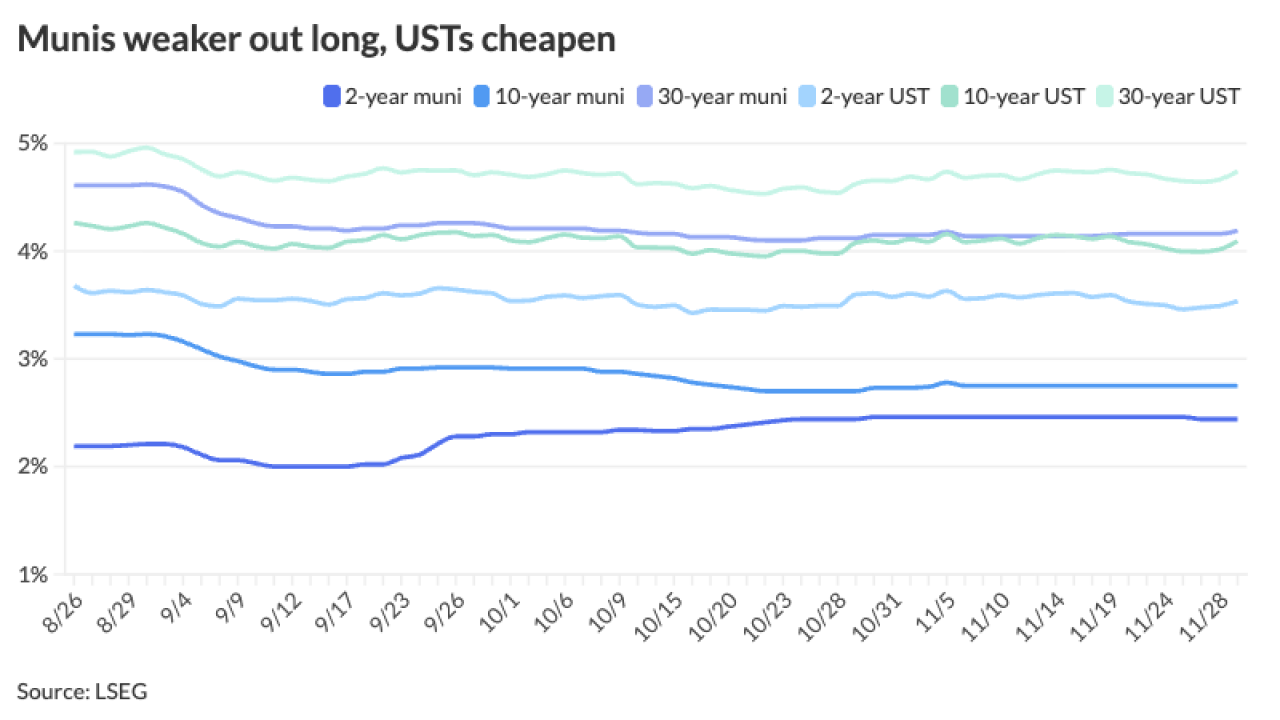
LOS ANGELES — San Bernardino is negotiating with smaller creditors in its bankruptcy case after having reached tentative agreements with employee unions, California Public Employees' Retirement System and pension bondholders.
It has a status hearing scheduled Thursday afternoon.
The city filed its Third Amended Plan for the Adjustment of Debts on May 27.
In May, City Attorney Gary Saenz told the Bond Buyer its almost four-year-old bankruptcy case could be over by the end of 2016.
The last major settlement agreement was reached with the city's pension obligation bondholders a month ago.
U.S. Bankruptcy Judge Meredith Jury set a confirmation hearing for mid-September during last month's status hearing. After that would come the confirmation effective date.
Personal injury claimant Javier Banuelos has asked for a relief of stay on his claim, but Judge Jury had previously ruled that Banuelos' personal injury suit was filed in violation of the automatic stay and ordered Banuelos to dismiss the complaint, according to the June 10 document filed by Attorney Paul Glassman, who is representing the city in the bankruptcy.
"Banuelos did not take an appeal from that order, which is now final," according to the document. "Banuelos provides no new facts or law why the state should be lifted now, just as the city is prepared to address voting on and confirmation of the plan."
The city and Big Independent Cities Excess Pool could not reach an agreement on certain plan related legal issues, and the city invited BICEP to author a section of the Disclosure Statement dedicated to describing BICEP's views on the matter, according to the city's filing.
BICEP filed an objection to the city's first filed disclosure statement on the grounds that the disclosure statement did not identify claims that were covered by the BICEP Agreement and did not describe how BICEP is affected by the plan.
The city has subsequently filed an exhibit to the disclosure statement including a list of all known litigation claims including more than 100 personal injury claims that could be covered by the BICEP Agreement and the Reinsurance Policies.
"The city believes the confirmation of the plan will not relieve BICEP and the reinsurers of their obligations to claimants even if the city does not first pay the SIR in full in cash," Glassman wrote in the filing.
The last major hurdle to exit was the city's plans to impair retiree health benefits, but the committee is supporting the plan, according to a June 3 filing.
The Official Committee of Retired Employees said in that filing that "the committee recognizes that the amount paid to the unsecured claimants is important to the feasibility of the plan and, accordingly, does not oppose the use of a reasonable discounted rate so long as the treatment is consistent with other similarly situated claimants."
Retirees and current employees who were previously eligible for subsidized medical benefits hold claims against the city for the value of the benefits eliminated, which totals roughly $82.3 million, according to the committee's filing.
The Official Committee of Retired Employees filed certain comments regarding the city's calculation of the Retiree Health Benefit Claims, specifically the city's use of a 3.2% discount rate to determine the present value of such claims. The city explains below why it used that discount rate.
The city calculated the value of the benefit for current employees and included those claims in the consenting union claims for each bargaining of current employees. The city separately valued the Retiree Health Benefit Claims of current retirees.
In both cases the city discounted the aggregate amount of the claims to present value using a discount rate of 3.2%.
The city chose the 3.2% rate so that its plan would be in conformity with the latest GASB Statement No. 75. Glassman said in the filing that Stockton Chapter 9 bankruptcy exit plan was not required to discount the retiree health benefits to present value, because the new GASB requirements had not been adopted.





